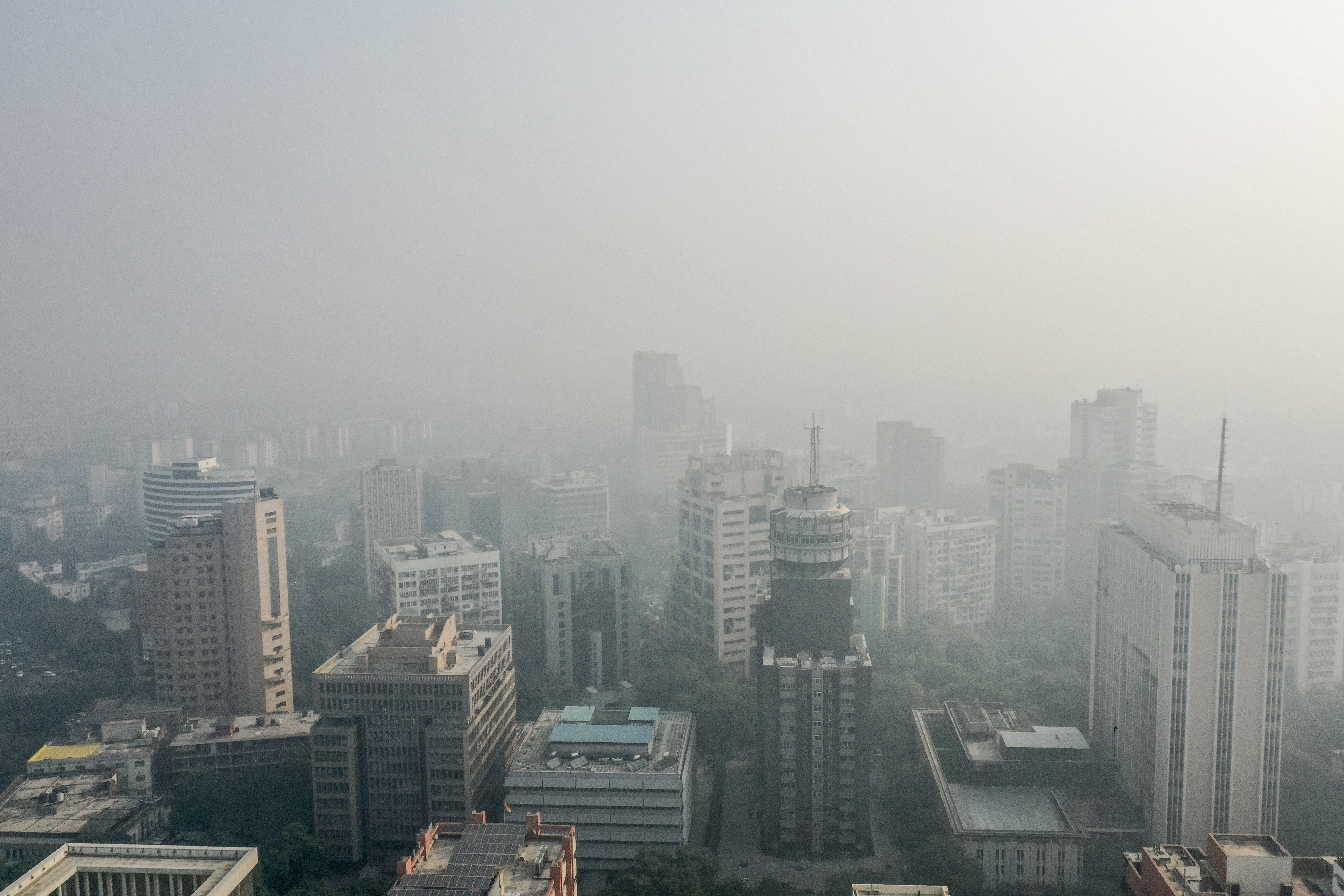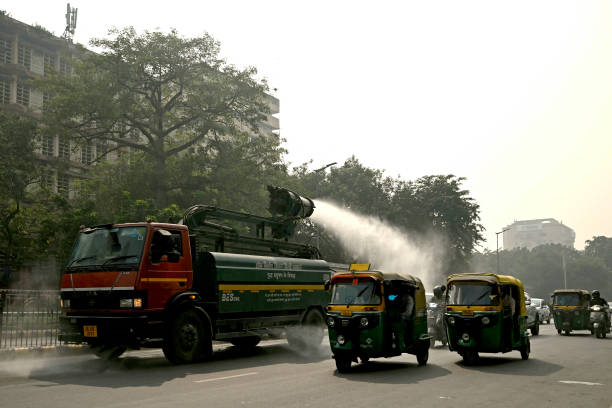Delhi air turns ‘very poor’ ahead of Diwali as residents complain of respiratory problems
Indian capital’s 35 million residents brace to survive another season of toxic air
Poor quality air continued to choke people in Delhi as the Indian capital braced for worsening air pollution during the Diwali festival this week, and beyond.
Delhi was the most polluted city in the country for the second consecutive day on Monday, recording an average Air Quality Index reading of 304 according to the Central Pollution Control Board. In several places around the city, the AQI was 20 times the WHO safe limit to render the air quality "very poor".
Prolonged exposure to “very poor” air can cause discomfort and respiratory problems. It can also provoke skin and eye irritation, and contribute to serious health conditions such as asthma, chronic obstructive pulmonary disease, bronchitis, emphysema, and cancer.
Although the air quality in some areas of the capital city improved to "poor" on Tuesday afternoon, with an average AQI of 252, it is expected to deteriorate to "severe" during the Diwali holiday on 31 October due to additional emissions from firecrackers as well as stubble burning in the neighbouring states of Punjab and Haryana. The Indian Institute of Tropical Meteorology forecast the air quality to oscillate between "severe" and "very poor" over the next six days.

People are shopping in the illuminated markets of the city wearing face masks to escape the pollution. "We got one more air purifier for our house just to be safe," Lekha Singh, 57, out for Diwali shopping, told The Independent.
“It is increasingly getting difficult to breathe these days and the air feels heavy but we do not have an option to leave this city.”
The pollution is a serious health hazard for Delhi’s 35 million people who are forced to breathe the toxic air for longer periods.

Hospitals are reporting a 30 to 40 per cent spike in patients complaining of breathing difficulties, mostly children and the elderly.
“We are seeing a sharp increase in respiratory cases," Dr Arunesh Kumar, a senior consultant in respiratory medicine at a hospital in Gurugram in the National Capital Region, told the Deccan Herald newspaper.
“This surge is largely driven by worsening air pollution, with pollutants such as PM2.5, PM10 and NO2 getting trapped due to the colder weather and stagnant air.”
Dr Dhiren Gupta, a senior paediatric consultant, said even people without any diseases were facing issues such as nasal blockage and irritability.
In an attempt to stop the air quality from deteriorating further, the Delhi government earlier this month imposed a complete ban on the manufacture, sale, storage and use of all types of firecrackers in the capital until the new year. The ban is far from effective as fireworks have been lighting the sky every night since the Dussehra, a Hindu festival celebrated since 12 October.
Delhi has been banning fireworks to curb air pollution for years now, starting in 2017 following a Supreme Court inquiry into the impact of such practices on air quality.
In 2018, the top court prohibited conventional firecrackers in the region, allowing only "green" alternatives. In 2023, Delhi’s AQI was between 445 and 520 the day after Diwali, placing it firmly in the "severe" category.
The state government has also set in place a Graded Response Action Plan to address the pollution.

Delhi chief minister Atishi announced on Monday that the state will reinstate 10,000 civil volunteers to work with the transport department to mitigate air pollution. She said the government has noted 13 pollution hotspots and 27 additional locations in the capital with elevated pollution levels that require monitoring.
State environment minister Gopal Rai said last week that due to a "change in weather there is a possibility of a rise in air pollution" over the next 15 days.
"How are we expected to function in air 16x more toxic than global health standards," X user Bhanu asked.
“Again October, Diwali time, pollution, respiratory problems, and the same politicians. Same story year after year. Delhi is not the same anymore. Sad reality,” said another X user.
Delhi has battled hazardous air quality during the winter months for years, prompting the authorities to frequently implement early school closures to safeguard children. The city grapples with high pollution levels from various sources, including vehicle emissions and dust, throughout the year.
But conditions worsen in winter when farmers in neighbouring states engage in crop stubble burning and low wind speeds trap pollutants, such as those emitted by firecrackers, significantly degrading air quality.
Air pollution has caused some 135 million premature deaths worldwide in the past four decades, according to a study based on data from 1980 to 2020.
It has also cut life short for tens of millions of people by causing preventable or treatable diseases or stroke, as per the study by Nanyang Technological University of Singapore.
Asia saw the “highest number of premature deaths attributable to PM 2.5 pollution”, at over 98 million people, with China and India accounting for the bulk of the fatalities.
The WHO has warned that the “combined effects of ambient air pollution and household air pollution” are associated with 6.7 million premature deaths worldwide every year.
Join our commenting forum
Join thought-provoking conversations, follow other Independent readers and see their replies
1Comments